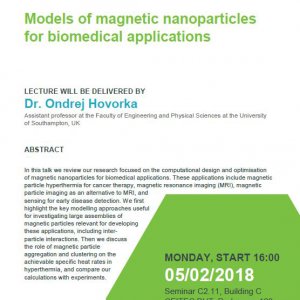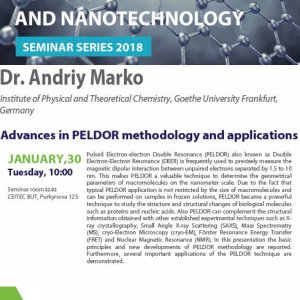NER - Structural studies of Nucleotide Excision Repair for drug development targeting protein-DNA interactions
|
Project Number / Acronym |
618223 / NER |
|
Funding scheme |
7th Framework Programme – People |
|
Call identifier |
FP7-PEOPLE-2012-CIG |
|
Start Date / Duration |
1st September 2013 / 48 months |
|
Project Cost |
EU funding 100.000 € |
|
Project Coordinator / Person in charge of scientific aspects |
Masaryk University, Prof. Vladimír Sklenář |
|
Researcher |
Dr. Konstantinos Tripsianes |
Numerous DNA repair pathways are required for genomic stability and chromosome maintenance. XPF/ERCC1 protein complex is an evolutionally conserved structure-specific endonuclease involved in nucleotide excision repair (NER) and other DNA repair pathways, making it essential for viability. The pleiotropic phenotypes of XPF/ERCC1 deficiency in humans range from cancer-predisposition to accelerated aging and severe developmental abnormalities. The present research combines biochemical and integrated structural approaches to study XPF/ERCC1 incision 5′ to the lesion during NER. The study is guided by the premise that XPA and RPA proteins, two other NER core factors, stimulate XPF/ERCC1 activity. To structurally characterize the NER pre-incision complex we propose an approach that builds on key protein-DNA and protein-protein interactions that are designed to progress towards studies of larger protein-DNA assemblies. To circumvent challenges associated with the size and dynamic nature of NER, we integrate frontier solution techniques such as Nuclear Magnetic Resonance spectroscopy, Small-Angle X-Ray/Neutron Scattering, Fluorescence Resonance Energy Transfer and innovative modelling approaches.
Project aims:
(i) decipher how the XPF/ERCC1 activity is regulated by other NER factors in order to prevent unwanted cuts within the genome
(ii) understand how individual DNA binding domains of XPF/ERCC1, XPA and RPA contribute to the catalytic activity
(iii) delineate the DNA conformation induced at ds/ss junction that can be used as a working model for the function of XPF/ERCC1 heterodimer in other cellular processes
Figure. Schematic overview and possible topology of molecular interactions for the recruitment of XPF/ERCC1 to legitimate NER substrates. The model is based on biochemical data and known structures of the protein domains. Star on the damaged strand denotes the lesion.









